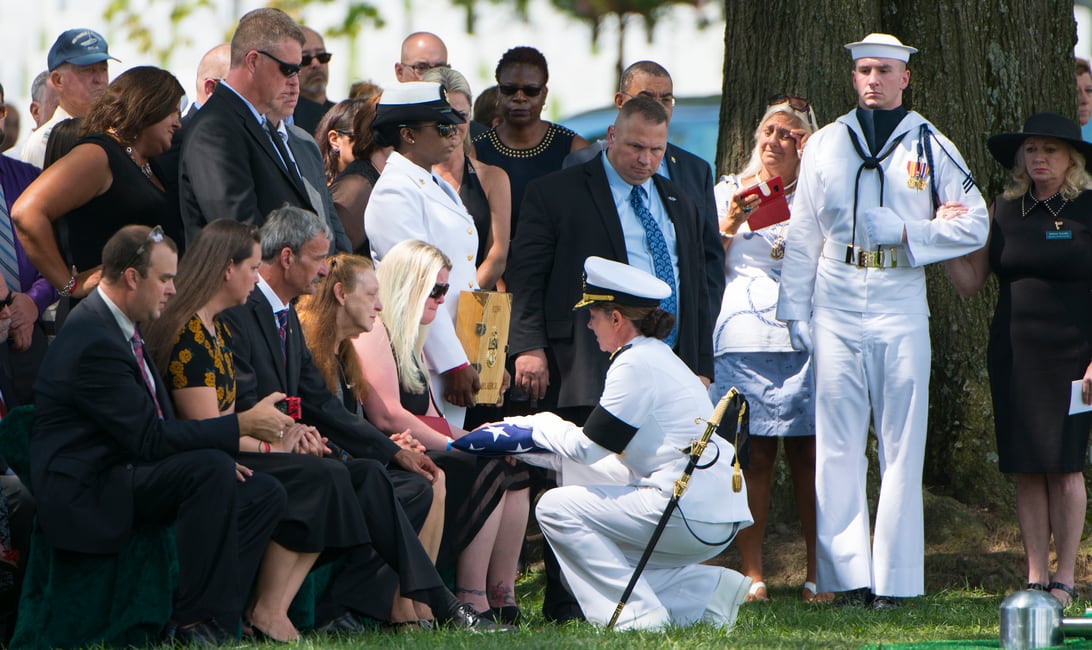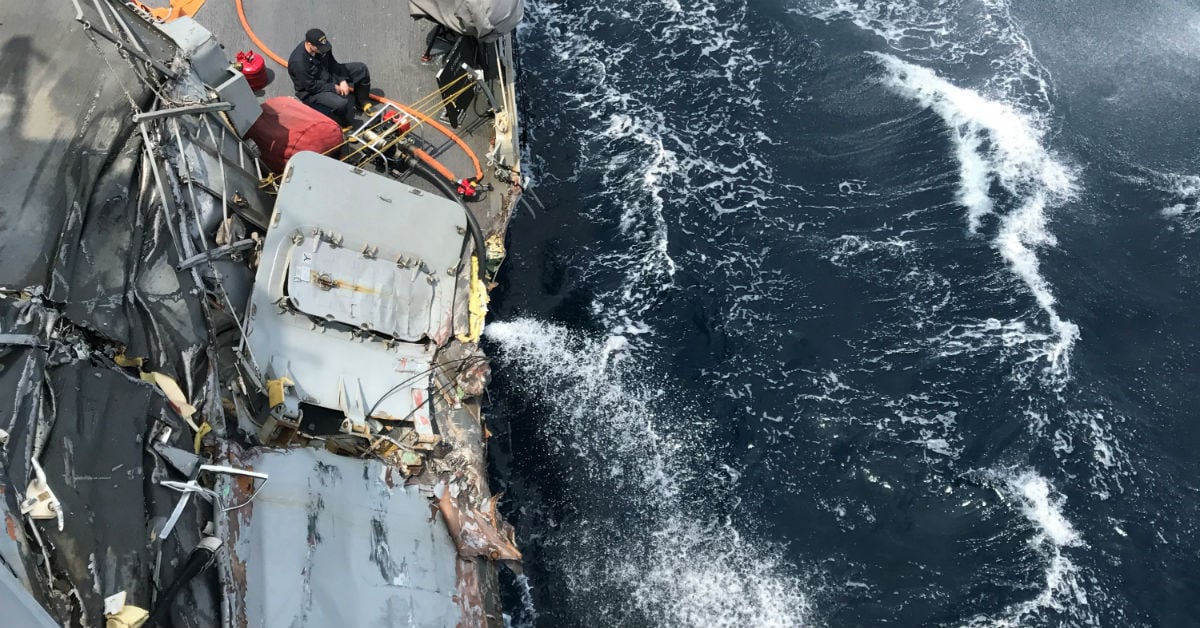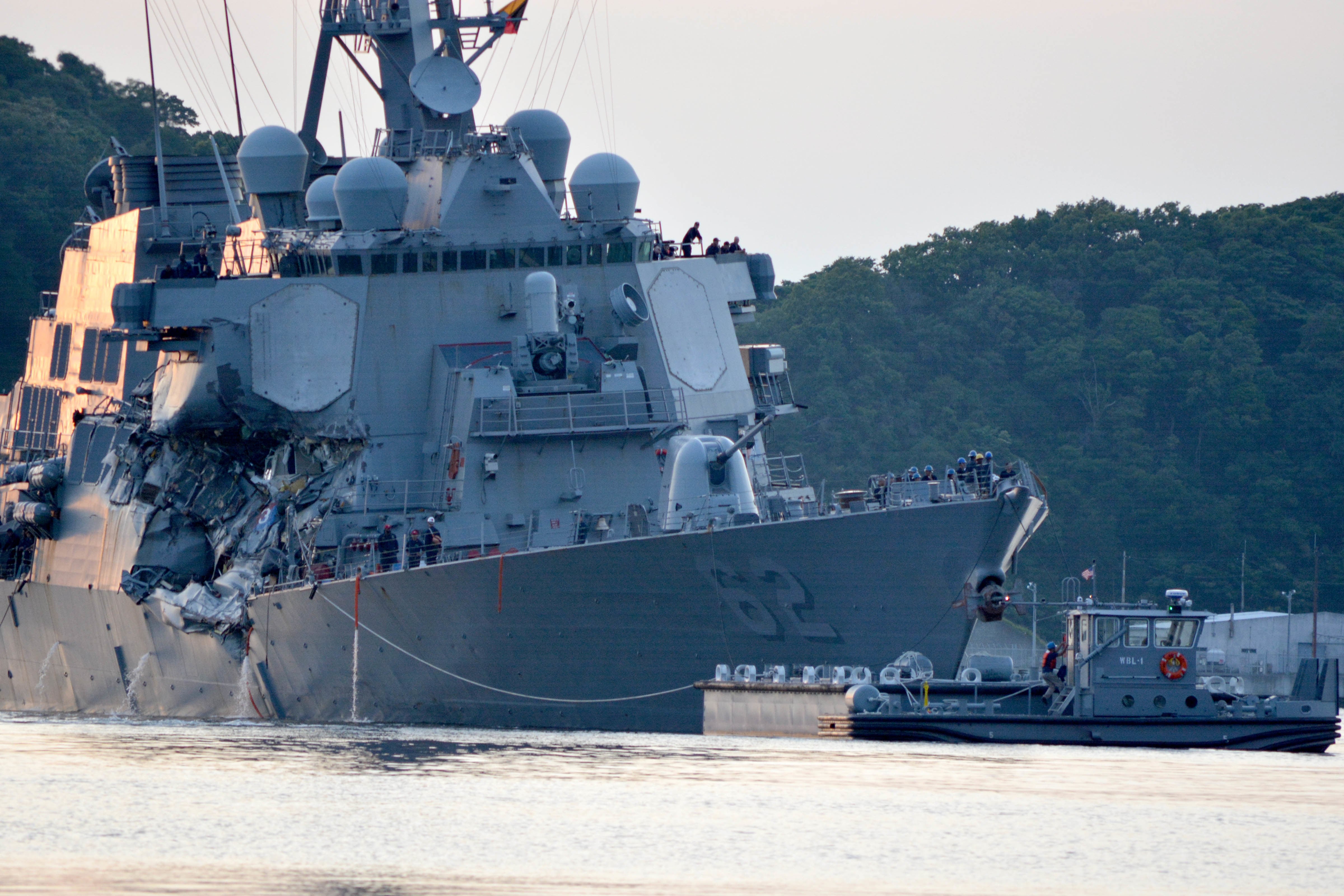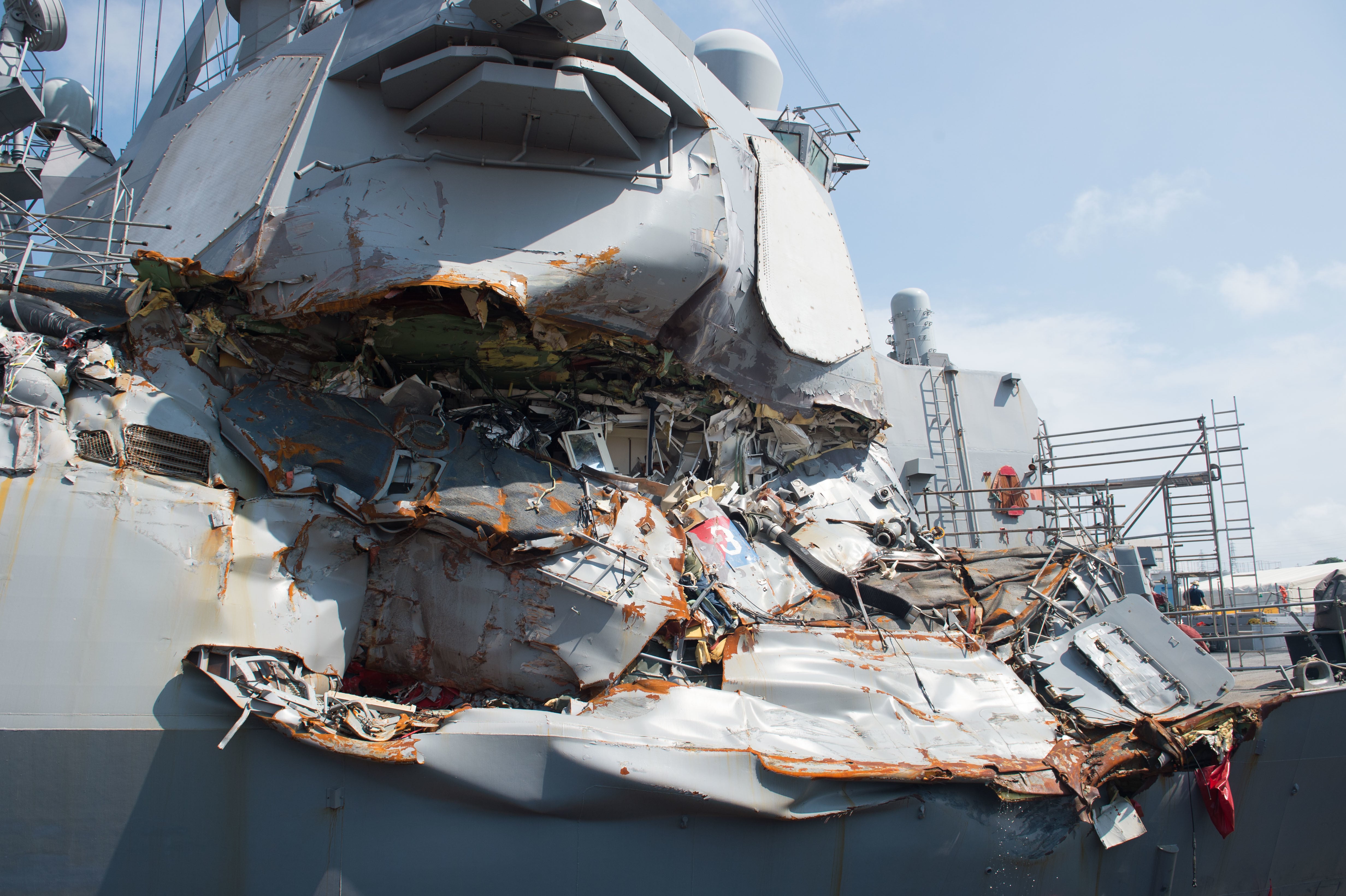The lack of a key crew member contributed to the fatal 2017 collision involving the guided-missile destroyer Fitzgerald, according to a secret report obtained by Navy Times.
The Fitz had been missing a quartermaster chief petty officer since early 2015, more than two years before the ACX Crystal rammed the warship in a bustling maritime superhighway off the coast of Japan, killing seven American sailors.
Quartermasters serve multiple roles on a ship’s bridge. They assist navigators and officers of the deck, often steer the warship and perform other watchstander duties. They also keep the vessel’s oceanographic publications and charts.
Prepared by Rear Adm. Brian Fort, the internal Navy investigation revealed that the Fitz’s superiors had been sounding the alarm about the vacant billet since at least a year before the accident, but the destroyer wasn’t the only warship on the pier that needed a quartermaster chief.
Destroyer Squadron 15 officials warned in a 2016 communication with Navy Personnel Command that this shortage of senior quartermasters was endemic across the squadron and was “unsustainable,” the Fort report states.
“DESRON Fifteen ships conduct the majority of (freedom of navigation) and presence operations in the South China Sea and western Pacific,” the squadron’s request noted. “As evident in the press, these operations are very strategic in nature and have senior level oversight from (U.S. Pacific Fleet), (U.S. Pacific Command) and (Washington, D.C.).”
RELATED

The lack of quartermasters forced the squadron into “cross-decking” personnel, essentially moving qualified sailors from ship to ship as needed, “basically shuffling the GAP inside (Forward Deployed Naval Forces-Japan),” the 2016 message warned.
The shortage of senior quartermasters was particularly damaging to the 7th Fleet because of the politically-sensitive waters warships navigate, including Chinese-fortified islands and shoals that have become regional flash points claimed by Beijing’s neighbors.
“Intent of this (report) is to articulate to senior leadership the strategic and tactical risk currently being taken regarding navigation and operations around political sensitive areas…and contested waters in the (South China Sea) and western Pacific,” the squadron report stated.
There was a quartermaster first class qualified as assistant navigator aboard the Fitz, but the Fort report states that the unnamed sailor’s “level of knowledge is poor,” particularly with certain navigational arrays.
In the squadron’s request to NPC, officials noted that the QM1 slot on the Fitzgerald “has not been filled by an active duty QM1 in over three years,” according to the Fort report.
RELATED

Although a QM1 had been scheduled to stay in the Fitz’s crew until September of 2017, the sailor received orders to be released from active duty a year early and the position went unfilled.
In his report, Fort chastised Japan-based DESRON 15 for failing to conduct “checks and balances” on the Fitz to ensure the destroyer’s crew received required training and qualifications during a hectic tempo of operations leading up to the disaster.
On Sept. 18, 2017, 7th Fleet commander Vice Adm. Phil Sawyer relieved both the commander of DESRON 15, Capt. Jeffrey Bennett, and his boss at Task Force 70, Rear Adm. Charles Williams.
Sawyer had taken the helm of the troubled fleet less than a month earlier, replacing embattled Vice Adm. Joseph Aucoin.
The Navy’s top leaders forced Aucoin to retire earlier than he planned to depart, not only because of the Fitzgerald tragedy but also due to a similar Aug. 21, 2017 collision involving the destroyer John S. McCain and the oil tanker Alnic MC near Singapore.
That pre-dawn accident claimed the lives of 10 more American sailors.
RELATED

Contacted by Navy Times, Pentagon officials declined to discuss details of the squadron’s warning or the state of senior quartermaster billets across the fleet.
“We will not discuss the communications or internal discussions regarding the manning issues of specific units,” Navy spokesman Cmdr. Jereal Dorsey said in an email last week to Navy Times.
Navy Personnel Command has been working with enlisted community managers and manning authorities “to improve overall senior quartermaster levels Navy-wide,” he added.
The Navy is currently short 33 senior quartermasters for the required 255 at-sea billets but the overall inventory “is currently healthy,” according to Chief of Naval Personnel spokeswoman Capt. Amy Derrick.
The number of authorized senior quartermaster billets at sea has grown by 59 since 2015, she said in an email to Navy Times.
Sea and shore senior QM manning stands at 94 percent, “which still enables the Navy to deploy ships safely and meet operational requirements,” Derrick said in an email to Navy Times.
Back on land, there are 147 chief quartermasters, 10 more than the required 137 billets, but Derrick credited the surplus to "various limitations on their deployability which we are aggressively working to correct.”
Navy spokesman Dorsey said last week that that extra 10 are not deployable due to reasons like limited duty status and pregnancy.
“Navy Personnel Command continues to work closely with Enlisted Community Managers and U.S. Fleet Forces Command to improve senior QM manning levels," Derrick added.
RELATED

But a chief quartermaster wasn’t the only key sailor missing from the Fitz’s manning, according to the Fort report.
Vacancies went unfilled throughout the crew and for those remaining, training and certifications had lapsed across a wide variety of categories “due to the ship’s operational schedule,” Fort wrote.
And Fort’s investigation wasn’t the first call in recent years to fill quartermaster vacancies for warships operating in the Western Pacific.
Aucoin wrote last spring in the U.S. Naval Institute’s flagship magazine “Proceedings” that he also warned superiors about manning shortfalls across the 7th Fleet.
At one point, five of 11 quartermaster billets were gapped, and 49 sailors had to be cross-decked in Japan to fill vacancies on vessels, he wrote, adding that it was “frustrating” to hear of San Diego ships that were so overmanned they had to leave 30 sailors on the pier.
“In addition to a soaring OpTempo, the cumulative effect over time of not having enough people and resorting to cross-decking had a debilitating effect on readiness,” Aucoin wrote.
“We not only lacked overall numbers of people, we also lacked mentors, the men and women with the skills and experience that are vital to raising our next generation of experienced sailors.”
Geoff is the managing editor of Military Times, but he still loves writing stories. He covered Iraq and Afghanistan extensively and was a reporter at the Chicago Tribune. He welcomes any and all kinds of tips at geoffz@militarytimes.com.





